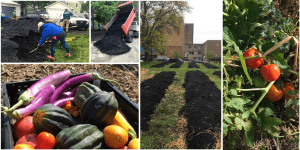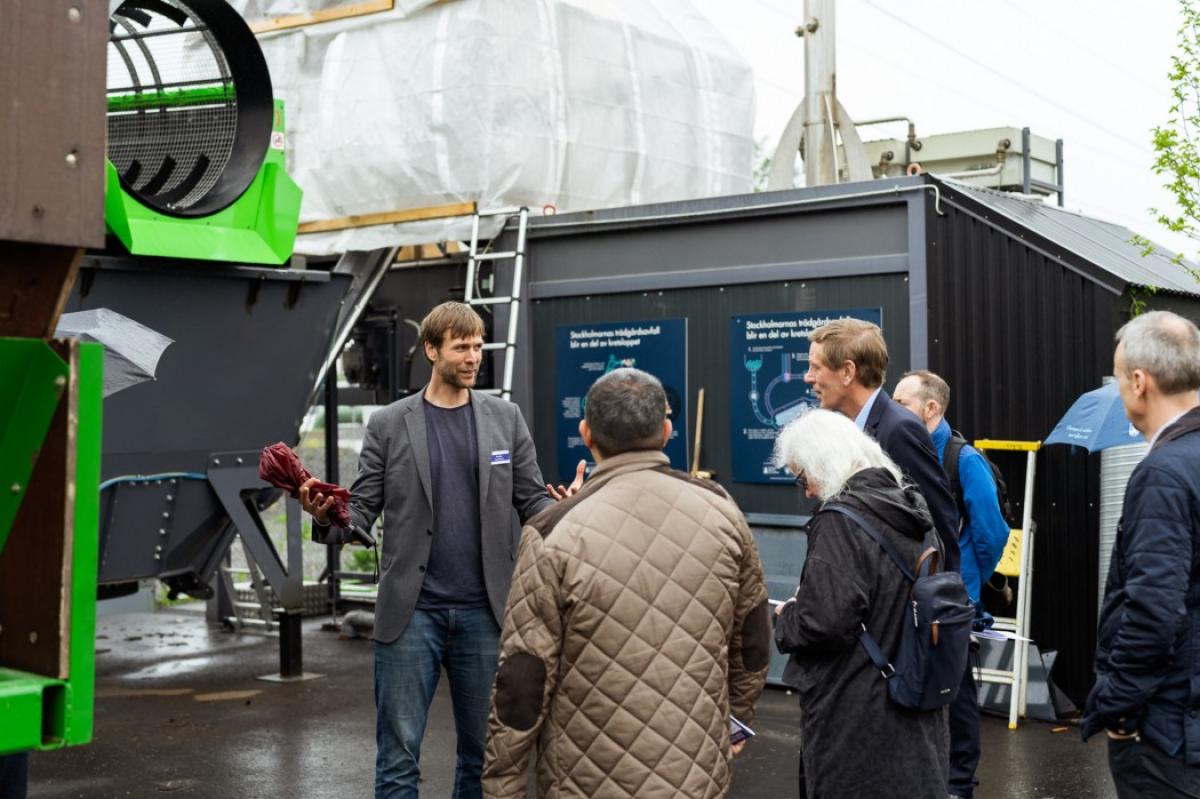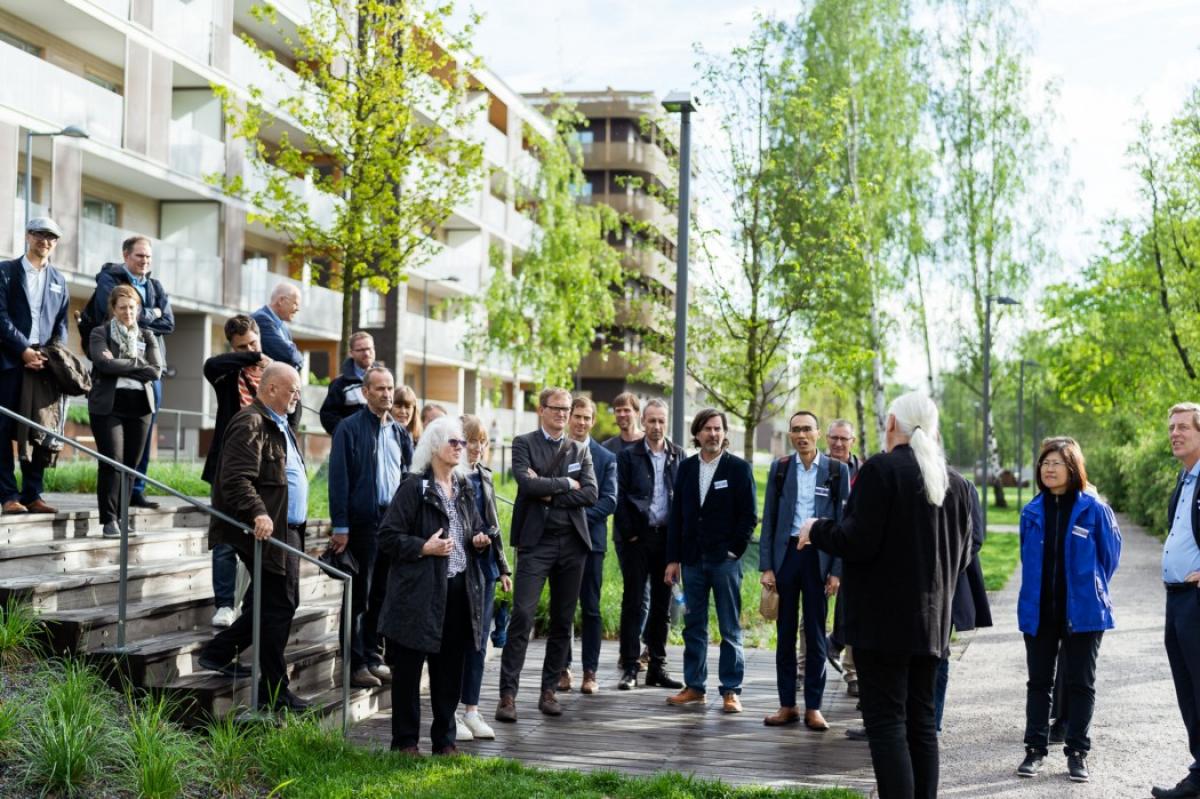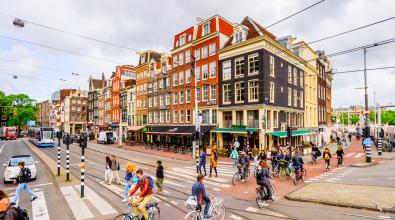Inspired by Stockholm’s success, a U.S. city goes big on biochar

Biochar is nothing new in Minneapolis. The city has, for years, bought truckloads of the charcoal-like material from a plant in Missouri and used the dusty black nuggets for a well-known use: to enrich soil for urban agriculture and bolster the local bounty of fruits and vegetables to harvest.
But then three city leaders visited Stockholm in May. And now Minneapolis is starting to think even more expansively about how this carbon-catching soil conditioner might help the city address a number of emerging concerns — from climate change to stormwater management.
The Minneapolis team visited the tidy plant in Stockholm’s public-works yard, where the city turns tree limbs into biochar — and simultaneously kicks off energy to heat buildings. And they went to one of the new super-sustainable neighborhoods Stockholm is known for, where biochar helps sponge up and filter stormwater while helping street trees thrive. (See the infographic at the bottom of this page for more on how biochar is made and used.)
They were blown away by Stockholm’s holistic approach to turning its abundance of yard waste into a recycled resource with so many applications — all while taking advantage of biochar’s signature benefit as a carbon sink that helps mitigate climate change.
“It was a lot simpler than I imagined it to be,” said Robin Hutcheson, Minneapolis’ public works director and a member of the Minneapolis delegation. “I think I had imagined biochar as something that was chemical and complicated and difficult to produce and difficult to use. What I learned is that it is actually simple to produce and able to be used in a variety of settings.”
The Stockholm trip was part of a Bloomberg Philanthropies event meant to showcase and aid replication of Stockholm’s success with biochar. After winning €1 million through the foundation’s Mayors Challenge, Stockholm opened its small biochar plant two years ago and is now looking at scaling up production. At the convening, city leaders behind the Stockholm effort shared their lessons learned with the Minneapolis team, as well as colleagues from across Europe and as far away as Hong Kong.
Visitors heard a lot about the various properties of biochar that make it so useful in a municipal context. When mixed into soil, biochar helps retain nutrients and moisture, enabling urban farmers, foresters, and landscapers to grow stronger, healthier plants that can resist drought. Along streets and roadways, it can help hold and filter stormwater, helping to prevent floods and reduce water pollution. Finally, biochar sequesters carbon in the ground, making its use one of the rare “carbon negative” climate strategies cities have at their disposal.
[Read: Stockholm opens its first biochar plant]
Inspired by what they saw in Stockholm, the Minneapolis team returned home and began planning how to ramp up the city’s own use of biochar. Councilman Jeremy Schroeder almost immediately secured passage of a council resolution directing the city’s Health Department, Office of Sustainability, and Public Works Department to explore ways of putting biochar to use.
Schroeder said he’s most enthusiastic about the role that biochar can play in combating climate change. “We’re not just trying to survive climate change, we’re trying to make a more equitable and resilient city, and biochar is one of those solutions that can help,” he said. “We hope to be an example for the Midwest and the whole U.S. with this.”
Minneapolis is working on two tracks. To start, the various city agencies most likely to deploy biochar are meeting regularly to consider ways they might experiment with using it. The emphasis now is on small tests, aimed at gaining a more fine-grained understanding of how this might scale up in Minneapolis’ context. Schroeder said he’s asked agencies: “If we gave you a bucket of biochar, can you use it and document what you did and come back with learnings?”
Hutcheson said Public Works is hoping to run a few experiments with biochar. While nothing is decided, she said, the city has some roadway reconstruction projects coming where she could see testing out whether adding biochar to the streetscaping helps with stormwater. “I’ve learned enough to want to experiment with this in the shorter term,” she said, “and then think about what more we might want to do in the longer term.”
The Health Department has already seen biochar’s benefits in urban agriculture. As part of an effort to boost availability of fresh, local produce, the Health Department partnered with a local Native American tribal government to increase agricultural production. The city trucks in the biochar to be mixed with compost the tribe generates locally. Jim Doten, who manages this project for the Health Department and was part of the city’s delegation to Stockholm, said these gardens are yielding 20 to 30 percent higher outputs than they would without biochar.
The second track in Minneapolis is to explore the feasibility of building a biochar plant so that agencies can source the material locally without having to truck it in from far away — the need to ship biochar reduces its climate-friendliness. There’s a number of issues to sort out, from determining how much biochar the city can actually use to deciding whether a biochar plant is something the city should own or encourage as a private enterprise.
“The bottom line is, we’re actively looking at and supporting ways to get biochar manufactured in Minnesota,” Doten said.
After years in the background — or actually, the underground — biochar is now front and center in Minneapolis. “Our city leaders are saying, ‘Yes!’ They’re very enthusiastic,” Doten said before adding, “and a large part of that is a direct result of our seeing the success of their work in Stockholm.”





